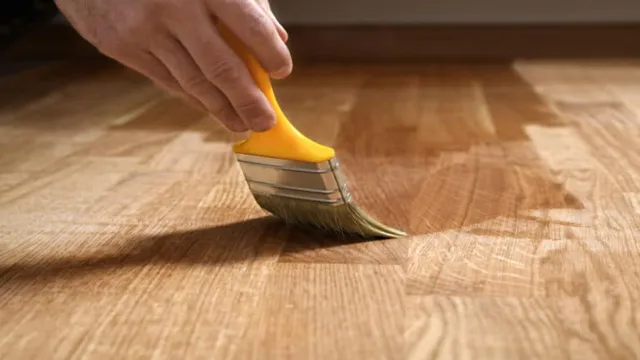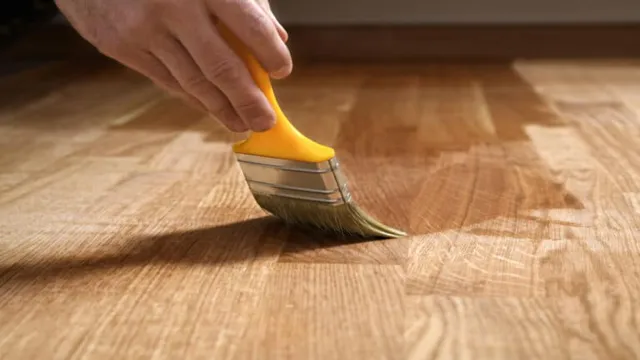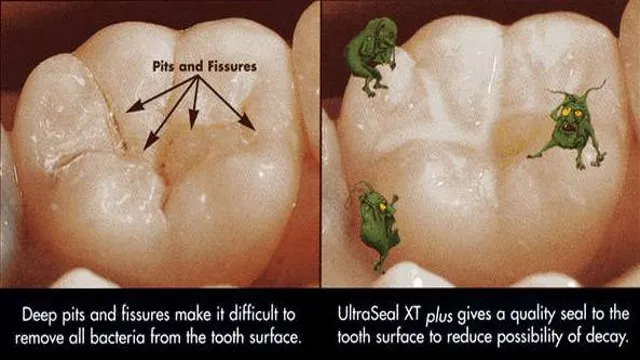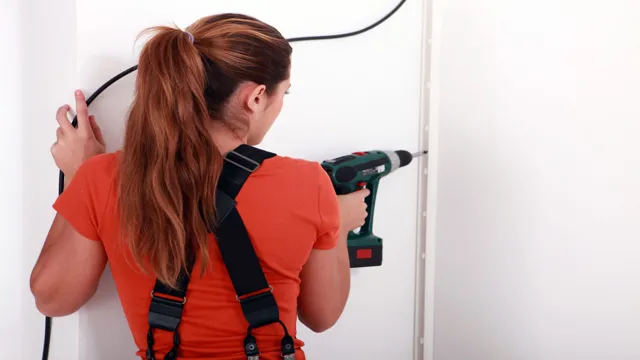How to Keep Vinyl Lattice from Buckling: Solutions for Sturdy Fencing
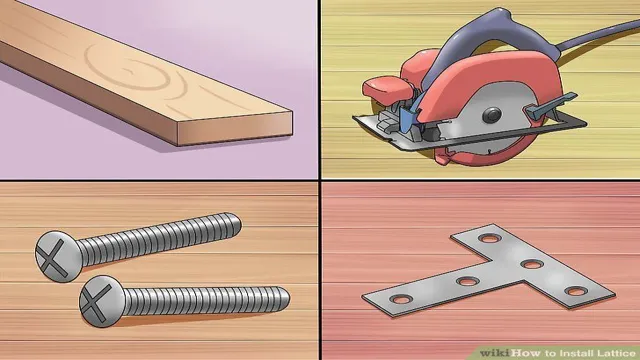
Are you tired of your vinyl lattice buckling and warping in the sun and heat? Vinyl lattice is an excellent and durable material to use for a beautiful outdoor accent or privacy screen. Unfortunately, vinyl lattice can also be prone to buckling, creating unsightly gaps and ruining the overall look of your project. But fear not, there are several simple steps you can take to prevent your vinyl lattice from buckling and ensure it stays looking great for years to come.
First and foremost, make sure you choose a high-quality vinyl lattice that is designed to withstand the elements. Cheaper alternatives may seem like a good deal but may not hold up as well over time. Another crucial step is to provide proper support for the lattice.
A good rule of thumb is to place support posts no more than 4 feet apart. This will help distribute the weight of the lattice evenly and prevent it from bending or sagging. Additionally, make sure to properly secure the lattice to the support posts with screws or nails.
Lastly, take steps to minimize direct sunlight and heat on the lattice. This can be achieved by planting trees or other tall plants nearby that will provide shade, or by placing latticework in a shaded area of your yard. By taking these simple preventative measures, you can enjoy the beauty and functionality of vinyl lattice without the headache of buckling and warping.
Understand the Causes
Vinyl lattice can be a great addition to your yard, but it can also be frustrating when it starts to buckle. Understanding the causes of this problem is key to preventing it from happening. One common cause is improper installation.
If the lattice is not securely fastened to the posts and frames, it can bow or warp over time. Another cause is changes in temperature and humidity, which can cause the vinyl material to expand and contract. To keep your lattice from buckling, make sure it is installed properly and consider using support brackets to reinforce it.
Additionally, avoid placing it in areas where it will be exposed to direct sunlight or moisture for prolonged periods of time, as this can also cause warping. By taking these steps, you can prevent your vinyl lattice from buckling and enjoy its beauty and functionality for years to come.
Temperature Changes
Temperature changes can occur due to a variety of factors, and understanding their causes is essential to predicting and mitigating their impact on the environment. One of the most significant drivers of temperature change is the burning of fossil fuels, which releases carbon dioxide into the atmosphere and traps heat. Other human activities, such as deforestation and agriculture, can also contribute to changes in temperature by altering the balance of greenhouse gases in the atmosphere.
Natural factors, such as volcanic activity and changes in solar radiation, can also play a role in temperature changes on a regional or global scale. By examining these different factors and understanding how they interact, scientists can develop better models of temperature change and work towards sustainable solutions to mitigate their impact on the planet.
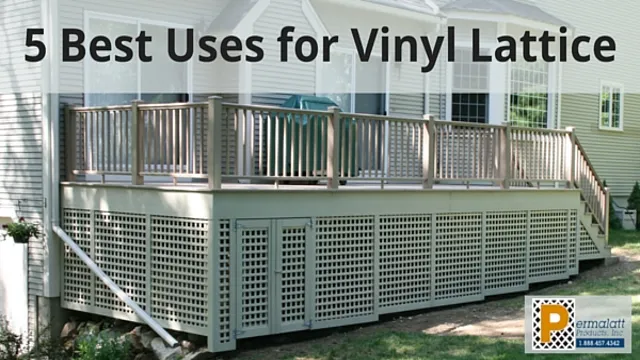
Structural Issues
When it comes to addressing structural issues, it’s essential to understand the root causes behind them. Economic inequality, systemic racism, and environmental degradation are all examples of issues that have structural causes. These issues are not the result of individual behaviors or actions but are embedded within larger social, economic, and political systems.
To address these problems effectively, we need to examine and change the underlying structures that create and perpetuate them. It is crucial to ask ourselves critical questions such as who benefits from the current system and who gets left behind. By recognizing the structural issues behind these problems, we can work towards building a society that is more just and equitable for everyone.
Choose the Right Lattice
Vinyl lattice is a popular choice for adding privacy and aesthetic appeal to outdoor areas, but it can sometimes buckle or warp under certain conditions. To prevent this, it’s essential to choose the right lattice material. Opt for high-quality vinyl lattice that can withstand extreme temperatures and humidity.
Additionally, ensure that the lattice is thick enough to handle the weight of any climbing plants or objects that may lean on it. With the proper material, you can enjoy the beauty and function of vinyl lattice for years to come while avoiding the frustration of buckling and warping. Remember, when it comes to lattice, it’s better to invest in quality upfront than to pay for costly repairs down the line.
Thickness and Durability
When it comes to choosing the right lattice for your outdoor space, one important factor to consider is thickness and durability. A flimsy lattice may seem like an easy solution, but it won’t hold up to the elements and may require frequent replacement. To ensure your lattice is strong and long-lasting, look for options made from sturdy materials like vinyl or wood that are at least 1/4 inch thick.
This will ensure that your lattice can withstand wind, rain, and everyday wear and tear. It’s also important to choose lattice from a reputable supplier to ensure quality and durability. By investing in a sturdy lattice, you can enjoy the beauty and functionality of your outdoor space for years to come.
UV Protection
When it comes to protecting yourself from harmful UV rays while enjoying the outdoors, choosing the right lattice can make a big difference. Lattice panels made from materials such as vinyl, wood, or metal can provide shade while allowing airflow and natural light to filter through. However, it’s important to select a lattice that offers adequate UV protection.
Look for lattice with a tight weave or small openings to block out more of the sun’s harmful rays. Additionally, some lattice materials may be treated with UV-resistant coatings or have built-in UV blockers for added protection. By choosing the right lattice for your needs, you can enjoy the beauty of the outdoors without risking your skin’s health.
Maintenance
When it comes to maintaining your outdoor space, choosing the right lattice can make all the difference. There are several types of lattice to choose from, including wood, vinyl, and metal. Each material has its own benefits and drawbacks, so it’s important to consider your specific needs and preferences.
For example, if you’re looking for a lattice that is durable and low maintenance, then vinyl may be the best option for you. On the other hand, if you prefer a more natural look, then a wood lattice may be the way to go. It’s also important to consider the design and style of the lattice, as this can have a big impact on the overall look of your outdoor space.
No matter what type of lattice you choose, it’s important to keep up with regular maintenance, such as cleaning and sealing, to ensure it lasts as long as possible. By choosing the right lattice and keeping up with maintenance, you can create a beautiful and functional outdoor space that you’ll enjoy for years to come.
Proper Installation Techniques
When it comes to vinyl lattice installation, one of the most common issues is buckling. This can be caused by a variety of factors such as improper spacing, over-tightening of screws, and exposure to extreme temperatures. However, there are several techniques you can use to prevent buckling and ensure your vinyl lattice stays in place.
First and foremost, make sure to space your lattice panels properly to allow for expansion and contraction. Additionally, avoid over-tightening the screws as this can cause the lattice to warp over time. Finally, consider using a reinforcement strip along the top and bottom edges of the lattice to provide extra support and prevent sagging and buckling.
By following these simple tips, you can keep your vinyl lattice looking great for years to come!
Post Anchors and Supports
When it comes to constructing a sturdy structure, it’s crucial to pay attention to the little details, such as proper installation techniques for post anchors and supports. A robust foundation is the backbone of a building, and ensuring that the posts are securely anchored and supported is essential to prevent any potential hazards or safety risks. Adequate planning and preparation are required before installing post anchors and supports, and it’s essential to follow the manufacturer’s instructions to prevent any errors.
Make sure to use high-quality materials that are appropriate for the type and load capacity of the structure. The right equipment and tools are also crucial for the job. By taking these precautions and following these guidelines, you can ensure that your structure is stable, durable, and will withstand the test of time.
Leave Room for Expansion
Proper installation techniques are crucial to ensure that your system runs at peak efficiency and lasts for many years. One essential aspect that should always be considered is leaving room for expansion. If you plan on expanding your network in the future, it’s important to ensure that your original installation will allow for growth without having to redesign the entire system.
This includes using the right cable lengths, junction boxes, and enclosures to accommodate additional equipment or cabling without interfering with the existing setup. By incorporating these expansion considerations into the installation process, you can save time and money in the long run. In addition, it gives your system the flexibility it needs to adapt to the changing demands of your business or infrastructure.
Overall, taking the time to plan and properly install your system with expansion in mind is an investment that pays off in the long run.
Regular Maintenance
Maintaining vinyl lattice is important to prevent the buckling of the material. Regular maintenance can help keep the vinyl intact and avoid any potential damage caused by weathering or excess pressure. To keep your vinyl lattice from buckling, it is recommended to inspect it periodically to check for any signs of damage, such as cracks or punctures.
Additionally, cleaning the lattice with soap and water can help remove any dirt or debris that may have accumulated on the surface. It is also important to avoid putting excessive weight on the lattice, as this can cause it to buckle over time. By following these maintenance tips, you can help ensure that your vinyl lattice remains in good condition and performs its intended function for years to come.
Cleaning and Inspection
Regular maintenance of your equipment is crucial for ensuring it remains in good working condition, and cleaning and inspection are two important tasks to carry out as part of your regular maintenance routine. Dust and dirt can accumulate in the nooks and crannies of your equipment, obstructing the airflow and causing it to overheat. Over time, this can damage the components and shorten the lifespan of your equipment.
Cleaning your equipment regularly will help to prevent this buildup and ensure it continues to function optimally. Similarly, regular inspections will allow you to identify any potential issues before they become major problems, reducing the chances of breakdowns and costly repairs. By taking the time to carry out these simple maintenance tasks, you can extend the life of your equipment and save yourself time, money, and stress in the long run.
So don’t neglect your equipment – give it the care and attention it deserves, and you’ll reap the rewards.
Final Thoughts
In conclusion, keeping vinyl lattice from buckling can be achieved through simple yet effective methods. It is essential to properly install the lattice with enough screws and spacers. Additionally, ensuring that the frame supporting the lattice is sturdy and level is crucial.
It is also important to properly maintain the lattice by regularly cleaning it and preventing heavy objects from leaning against it. By taking these measures, you can significantly increase the lifespan of your lattice and prevent any unsightly buckling. Remember to keep the keyword “how to keep vinyl lattice from buckling” in mind when implementing these tips for optimal results.
Conclusion
So, if you want to prevent your vinyl lattice from buckling, remember to measure twice, install properly and provide adequate ventilation. And if all else fails, you can always bribe it with some smooth jazz – after all, even vinyl likes a little harmony in its life!”
FAQs
What causes vinyl lattice to buckle and warp?
Vinyl lattice can buckle and warp due to changes in temperature, excessive weight, and poor installation.
How can I prevent vinyl lattice from buckling in hot weather?
To prevent vinyl lattice from buckling in hot weather, use lighter-colored lattice panels, use a wider lattice pattern to allow for more airflow, and avoid installing the lattice in direct sunlight.
Can I install vinyl lattice myself, or should I hire a professional?
Vinyl lattice can be installed by a homeowner with basic tools and some DIY experience. However, hiring a professional may ensure a more secure and long-lasting installation.
How can I clean and maintain vinyl lattice to prevent buckling?
To clean and maintain vinyl lattice, rinse it with a garden hose and use a mild detergent if necessary. Avoid using harsh chemicals or power washers as they can damage the lattice, leading to buckling and warping.
How do I repair vinyl lattice if it has already started to buckle?
To repair vinyl lattice that has started to buckle, remove the affected panels and replace them with new ones. Ensure proper installation and consider reinforcing the lattice with additional support.
What is the best way to attach vinyl lattice to a fence or deck?
The best way to attach vinyl lattice to a fence or deck is by using screws or nails, spaced every six inches. Make sure the lattice is level and securely fastened to prevent buckling.
Can I use vinyl lattice in areas with high wind or snow loads?
Vinyl lattice can be used in areas with high wind or snow loads if installed properly and reinforced with additional supports. Consult with a professional if you have concerns about the load capacity of your lattice.

